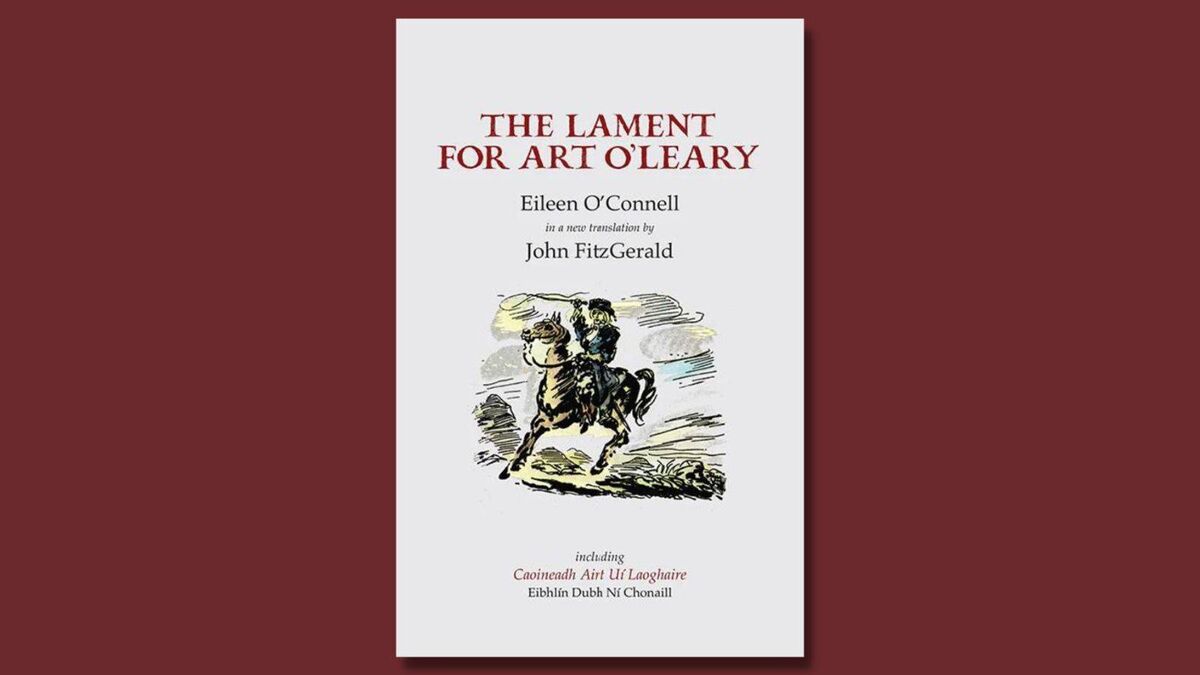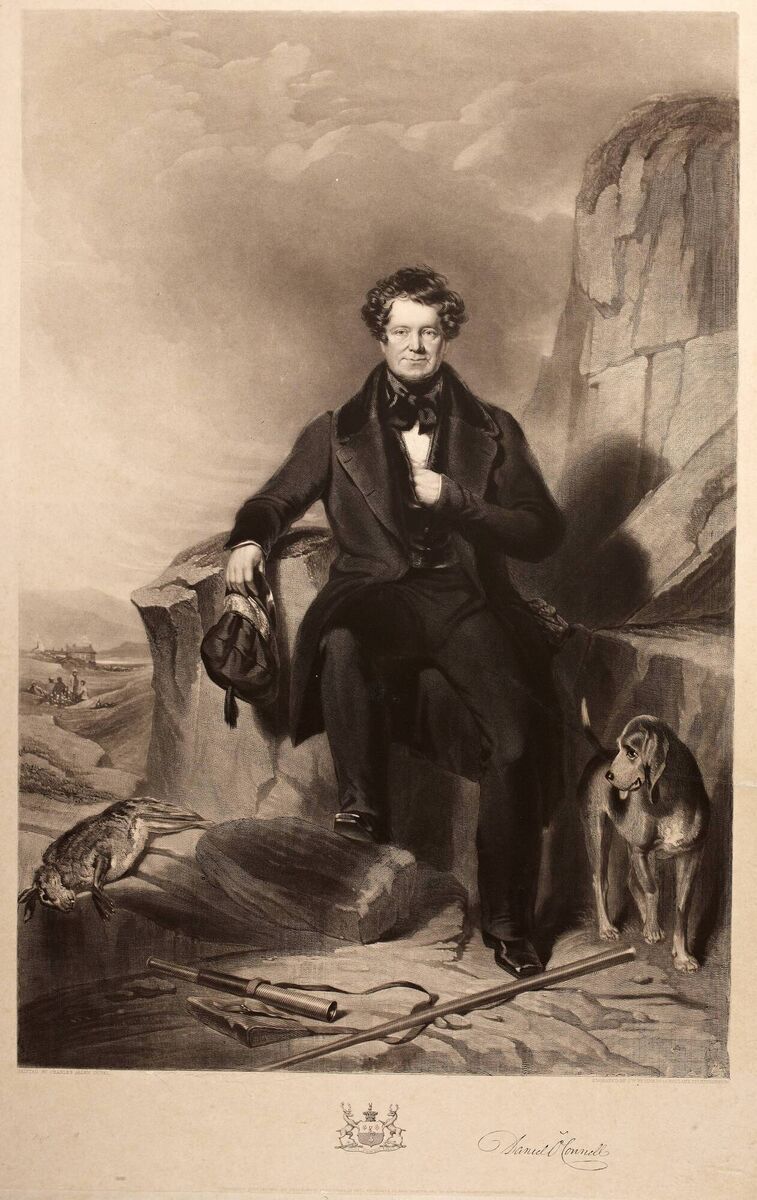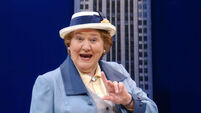Book Interview: translating Caoineadh Airt Uí Laoghaire - The Lament for Art O'Leary

John FitzGerald: translator of the new edition of The Lament for Art Leary
- The Lament for Art O’Leary
- Eileen O’Connell, in a new translation by John FitzGerald
- The Gallery Press, pb €11.95 / hb €18.50
When Macroom native John FitzGerald was a young boy attending De La Salle National School, he was transfixed by the dramatic story of Caoineadh Airt Uí Laoghaire ( The Lament for Art O’Leary) that was composed by his heartbroken widow, Eibhlín Dubh Ní Chonaill (Eileen O’Connell) following his murder.
FitzGerald’s fifth class teacher, — “brilliant” — John Browne, read the poignant long poem, now 250 years old, to the youngsters in both Irish and English.
It made such an impact on FitzGerald that when he and his classmates were instructed to kneel on the pavement on Cork Street, Macroom, on October 6, 1971, he thought the widow in the funeral cortege for composer Sean Ó Riada was Eileen O’Connell.
It was as if the eventful long poem had come to life in the confused mind of a schoolboy.
Now FitzGerald, an award-winning poet who settled in Lissarda outside Macroom with his wife and children, has added to the considerable body of translations of the lament.
Peter Levi, Professor of Poetry at Oxford, has said of the poem that it’s “the greatest poem written in these islands in the whole eighteenth century”.
It differs from most of the best known narratives of love and loss in the Irish tradition because Art and Eileen were real people.
“Eileen first saw Art in the square in Macroom [in 1767] so that made it all very immediate and personal to me,” says FitzGerald.
“Eileen [from Derrynane in Co Kerry], in the town to visit her sister, was in all likelihood standing where the AIB is now, facing the town hall. She would have seen Art in his uniform. He was a captain in the Hungarian Hussars back from duty. She would have been a little older than him, about four years. They got married [against her family’s wishes] very shortly afterwards and moved into Raleigh House outside Macroom. Children came along and Eileen was pregnant with her third when Art was killed.”
It was the time of the oppressive Penal Laws. Art, a defiant and anti-establishment figure, refused to sell his prized horse for five guineas to a local Protestant magistrate, Abraham Morris, in accordance with a punitive law.
Following a public dispute with Morris, Art was shot dead by him on May 4, 1773, at Carriganima, some miles northwest of Macroom. Eileen was alerted to the terrible news when her husband’s mare galloped home without him.
She went to the scene of Art’s death, drank some of his blood and gave vent to her grief in her native Irish in a memorable poetic lament.
As was the tradition, the lament or ‘keen’ was generally half sung and half spoken by a woman, expressing regret for the death of its subject while celebrating any admirable deeds and notable personal qualities.

The Lament for Art O’Leary is thought to have existed in oral form for 30 years before being written down in 1800 and later published in print in 1892.
FitzGerald’s interest in the lament is partly topographical as he grew up near where Art and Eileen first met and is familiar with the various place names mentioned in the narrative.
With over 20 translations of the lament from scholars and writers, including Seán Ó Tuama (whose translation is FitzGerald’s main source,) Eilís Dillon, Patrick Galvin, Vona Groarke, Eleanor Hull, Thomas Kinsella, John Montague, Angela Bourke, Paul Muldoon, and Frank O’Connor, why take it on?
“Because nobody has done it in a particular way which is to take the three-stressed lines on. Most of the lines have three beats in them. They are short lines. The storytelling happens quite quickly, at a canter, in Irish. I felt nobody had made an English translation which preserved the sonic impact and the dramatic impact of the short-stressed lines. I transposed that currency into English. It was very challenging. It took about three years. It meant I had to constantly compress and make my English lines shorter than what the impulse is when translating. But it was an interesting discipline. It meant also that I had to work hard to do what I call internal rhyming, avoiding straightforward end-line rhyming. With the lines so short, it would have sounded almost like a nursery rhyme if I had end-line rhyming.”

Eileen, who was an aunt of ‘The Liberator’, Daniel O’Connell, came from a relatively wealthy family as did her husband. Their union was a source of controversy for Eileen’s parents.
“Art had a fiery unpredictable mercurial personality. There were lots of stories about other women and him being unfaithful.”
The lament contains the lines extolling Art’s virility: “Rich merchants’ wives/would bow down to the ground/knowing full well/your mettle in bed.”
“Art was a bit of an outlaw, fond of drink and a bellicose kind of guy. The O’Connells never wanted to draw attention to themselves. That’s because their business, what they called ‘import and export’, was what others might have called ‘smuggling’. It wasn’t, exactly. They basically imported a lot of goods including wine and silk and would have exported butter and other things from Derrynane. But they mightn’t have done it with the full oversight of the authorities. Art was too public for their liking, too much of a lad around town. But Eileen put her eye on him and they fell madly in love.”
While the story of Art and Eileen is part of the canon of Irish literature, FitzGerald says there is a lot of conjecture about it.
“We’re not absolutely sure that the dispute Art had with Abraham Morris was about a horse. There’s speculation that it could have been to do with a woman or it might have been some other misdemeanour.”
While there is also speculation about the provenance of the lament, FitzGerald says “that’s because laments were never written down. In all likelihood, it is by Eileen but most of the scholars say that it probably wasn’t all enunciated in one go. Some of it [was articulated] when Art was buried in Kilnamartyra and some of it came out when he was re-interred in Kilcrea. Eileen’s mother [Máire Dubh Ní Chonaill] was a poet. Eileen herself is said to have composed a lament for a man she married when she was just a teenager. He died after they were married for six months. So she would have had some practice and a great education. Her brothers were sent to France to be educated. There is no evidence that the girls went to France but it’s very likely that Eileen would have absorbed everything that was going on, growing up in the tradition of her mother. Daniel O’Connell used to credit his skill and oratory to Eileen’s mother who lived to 90.”
FitzGerald, a BA graduate of UCC, recently retired from his post as head librarian at the university. He is now an adjunct professor in the university’s school of English. Having written poetry in his teens “which wasn’t really very good, I didn’t so much abandon it. I just came back to it naturally when I turned 50.”
He won the Patrick Kavanagh Poetry Award in 2014 and his 2021 collection, The Time Being, was shortlisted for the Seamus Heaney First Collection Poetry Prize. With his new book, he has come full circle since a school boy enraptured by the larger-than-life Art O’Leary and the passionate Eileen O’Connell.



